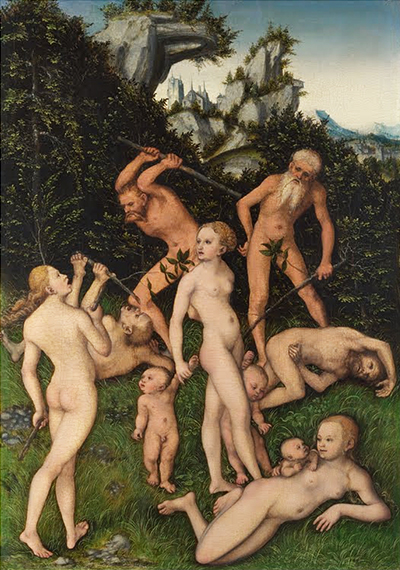The artist, Lucas Cranach the Elder, was a German Renaissance painter of the 16th century. One of his many works was the painting of a mythical scene titled The Close of the Silver Age. He painted the picture sometime around 1530.
The painting describes a Greek mythological scene that involves the Silver Age. It's said that the picture shows a view that depicts the quarrelsome end of the Silver Age. The Silver Age is the second of the five "Ages of Man" which the poet Hesiod refers to in his work titled Works and Days. It follows the period known as the Golden Age. It describes the first stage of decay following the Golden Age. The scene in the picture shows three slim female figures with three very young children. There are also four men in the group. All of them are naked. They are either standing or laying on a grassy area in front of trees and bushes. Two of the male characters are standing over two other men on the ground. The men standing up are holding branches and using them to beat the men laying down.
The women in the group appear to be complaining; probably about the fighting. When painting mythological scenes, Cranach often placed one or more slim naked female in the picture. For someone looking at the picture, it is the figures that are the focus. To separate them from the background, Cranach uses bushes and trees, almost as a line across the middle. The background shows a mountain range, topped by a clear sky. Two rocky peaks dominate the top half of the picture. Between them, a road leads up to a large stone-built house. Amongst the mountains, there is a village on the right of the picture.
Cranach's painting of the Close of the Silver Age is not unique. He painted several works on a similar theme which date between 1527 and 1535. The similarities strongly indicate that mean that Cranach likely painted the Close of the Silver Age sometime around 1530. He painted the picture using oil on oak. It is a small painting that measures 50.2 cm high by 35.7 cm wide. It is on display in London’s National Gallery. They acquired the painting in 1924 as part of a legacy by the estate of Dr Ludwig Mond. Although a painter, Cranach is also known for producing engravings, drawings and woodcuts during his long career.




